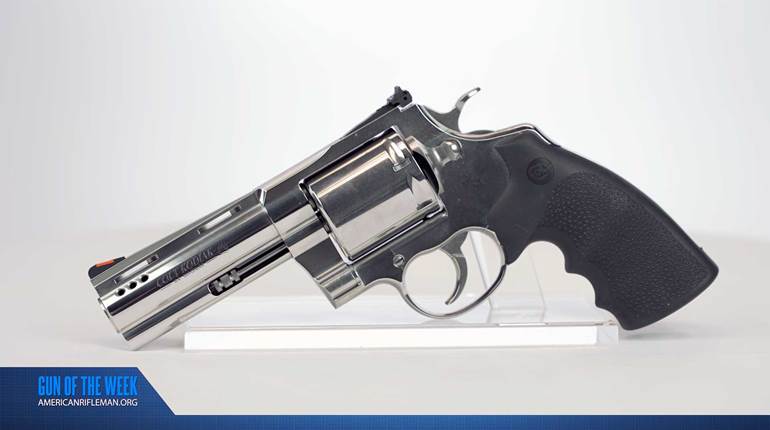Until the end of the 17th century, one of the main ignition systems used in long guns was the matchlock. However, there were several shortcomings with the simple matchlock mechanism, causing gunmakers to seek out more effective mechanisms. One evolution was the wheellock, and while it was fast and effective, it wasn't perfect. Watch our "American Rifleman Television" I Have This Old Gun segment above to see the wheellock in action.
"The wheellock is one of the most interesting ignition systems ever created," NRA Media Editorial Director Mark Keefe said. "You needed a couple of things. Not only do you need firearms technology, you also had to know how to build a clock, all in the lock of a gun."
Even with the rise of the flintlock action in the 1600s, the wheellock still held some advantages. Notably, the unique arrangement of having a spinning, serrated wheel in the action that worked against iron pyrite to create sparks was a major improvement for one key reason.

"This has one major advantage over the flintlock," American Rifleman Field Editor Garry James said. "The sparks are actually in the pan, right in the pan, when you pull the trigger. Whereas the sparks have to fall down into the pan when you use a flintlock. Consequently, a well-tuned wheellock is much, much faster than a flintlock."
One of the key issues with the wheellock is how labor-intensive it is to build the mechanism. The serrated wheel uses a clock spring, and the cock holding the iron pyrite has to put sufficient pressure onto the wheel in order to create the sparks without wearing down the mechanism. Most importantly, the wheellock used a sliding pan cover to protect powder from the weather until the gun was fired, and this sliding pan had to move out of the way automatically once the trigger was pulled.
"Everything has to work in conjunction when you pull the trigger," American Rifleman Executive Editor Evan Brune said. "The wheel has to start spinning, the sliding pan cover has to move, and the gun has to fire, and when you want to get all of those things working in concert, that takes some really extensive, time-consuming labor to produce something that can work that reliably with that many moving mechanisms and parts."

Despite the quick-firing nature of the wheellock, the complicated nature of the mechanism also created problems. Aside from the expense required to build the gun in the first place, keeping such a design working involved a great deal of knowledge, skill and care.
"They're a little finicky. You know, if you overwind the spring and cook it, that's a problem," Keefe said. "If you underwind the spring, you might not get enough sparks. So there's a little bit of finesse in keeping a wheellock running. And I don't think the average soldier in the 1600s probably had the wherewithal or mechanical ability to constantly mess with what is really a precision instrument."
To watch complete segments of past episodes of American Rifleman TV, go to americanrifleman.org/artv. For all-new episodes of ARTV, tune in Wednesday nights to Outdoor Channel 8:30 p.m. and 11:30 p.m. EST.























